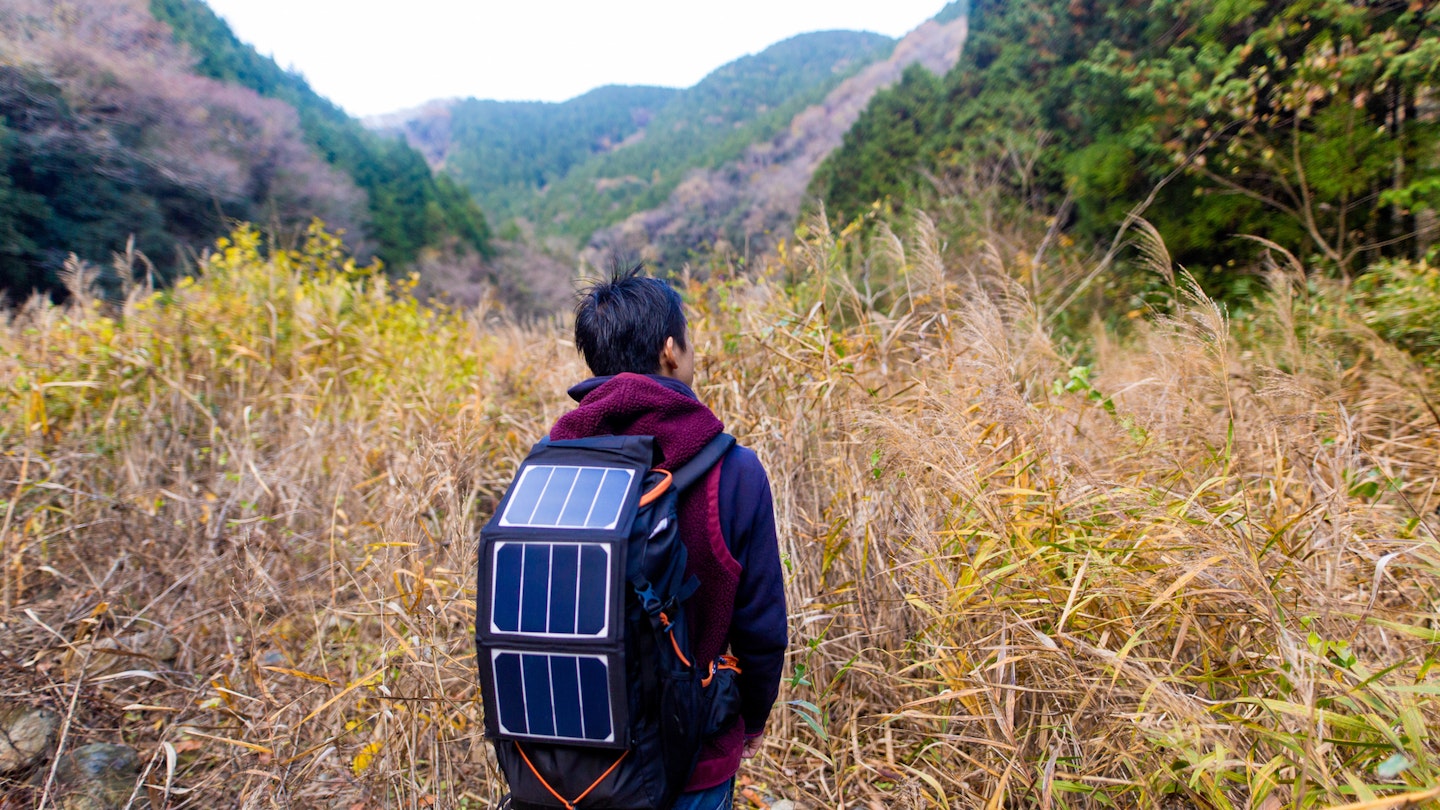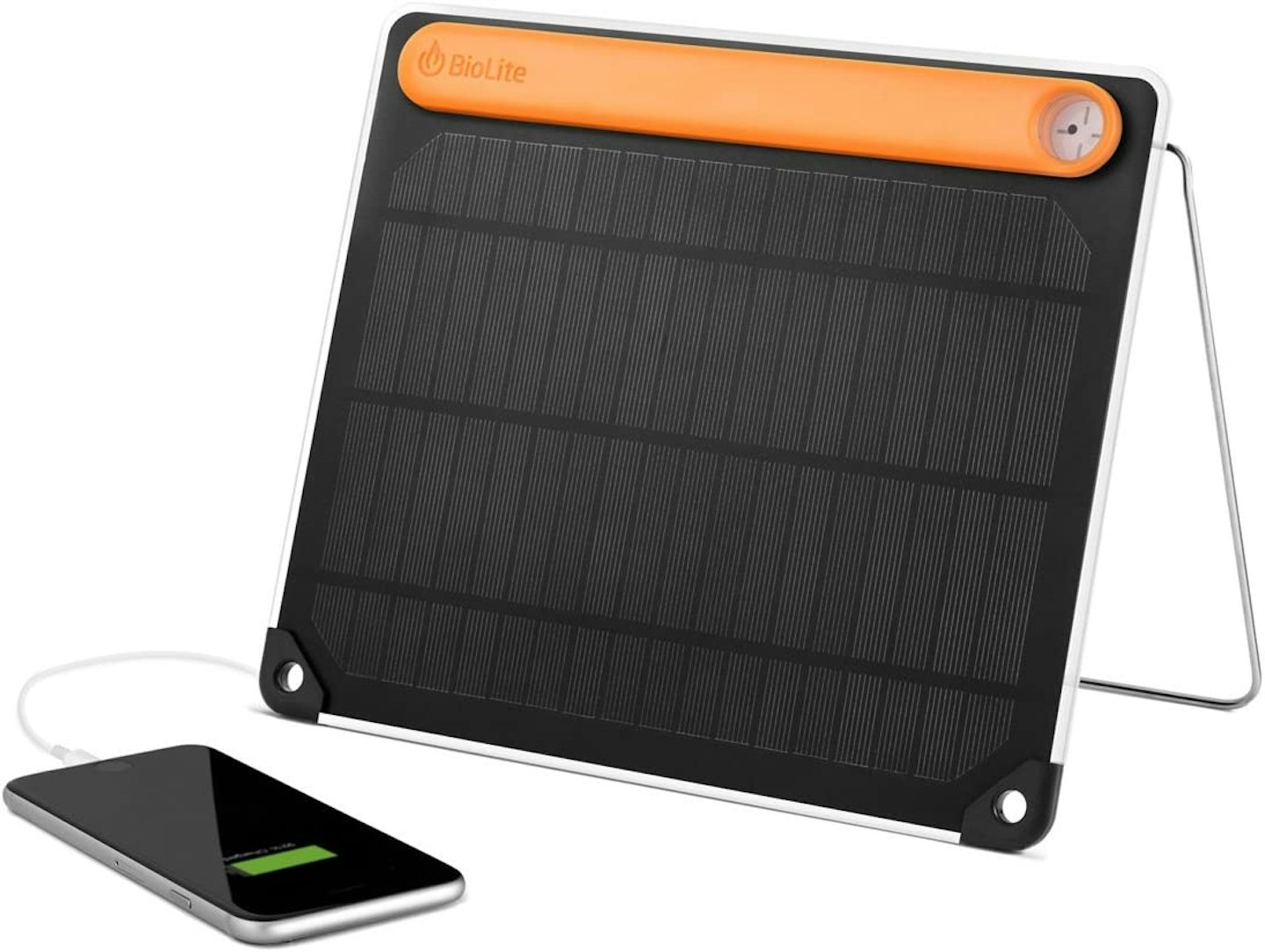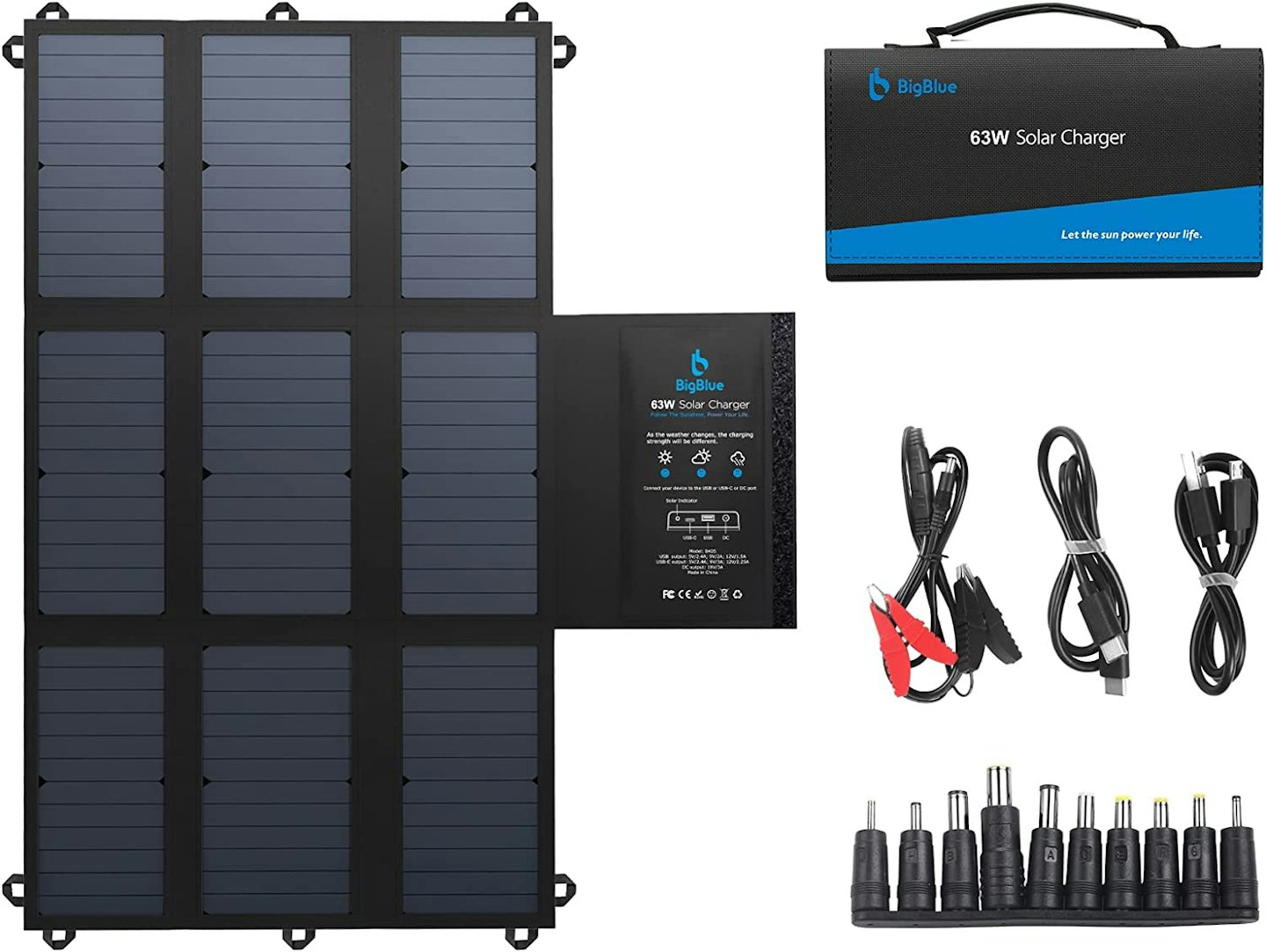Outdoor adventures are fantastic. Be it walking, hiking, camping, or simply picnicking in the park, step outside and enjoy what the natural world has to offer.
It's difficult, though, to truly return to nature if your phone battery is running low. Whether you’re relying on it for photos, directions, or a safe connection to the wider world, you soon realise that the natural world is missing one vital necessity – power outlets.
Well, this is a problem no longer. Solar panel technology has developed to such a degree that you’re now able to purchase portable panels for personal use. This is fantastic for many reasons, both environmentally and economically – the sun is renewable and free.
To help you out we’ve gathered together the best solutions available on the market today.
Choosing the right solar panel
The selection that we have made is diverse, with solar panels for hikers and campers all the way through to large units best suited to powering a campervan with the sun.
Due to the nature of solar panel technology, the smaller solar panel for walkers are not hugely powerful - but this doesn't mean they are without use. While they won't be able to charge up dozens of devices in a day, they will keep essential devices running. They are perfect for use with smartphones, GPS trackers, head torches and - perhaps best of all camping gadgets - power banks.
Using the small 5W or 10W panels to top up a power bank is a surefire way to ensure you have power for the evening, which is when you're more likely to want devices to be on charge.
The larger solar panels that we have recommended are best used at basecamp, in the garden or with a campervan. The power they can deliver is huge by comparison with the small backpack-mountable options, but they aren't something you want to carry around the whole day - they can add up to 5kg before you even consider how cumbersome they are.
A nice middle ground between these two polar opposite solar panels is the BigBlue 63W 19V listed below. Foldable, compact and weighing under 1.5kg, it's a reassuring presence for through-hikers and smaller caravan owners who can't do without power.
The best solar chargers 2022
The best small solar charger
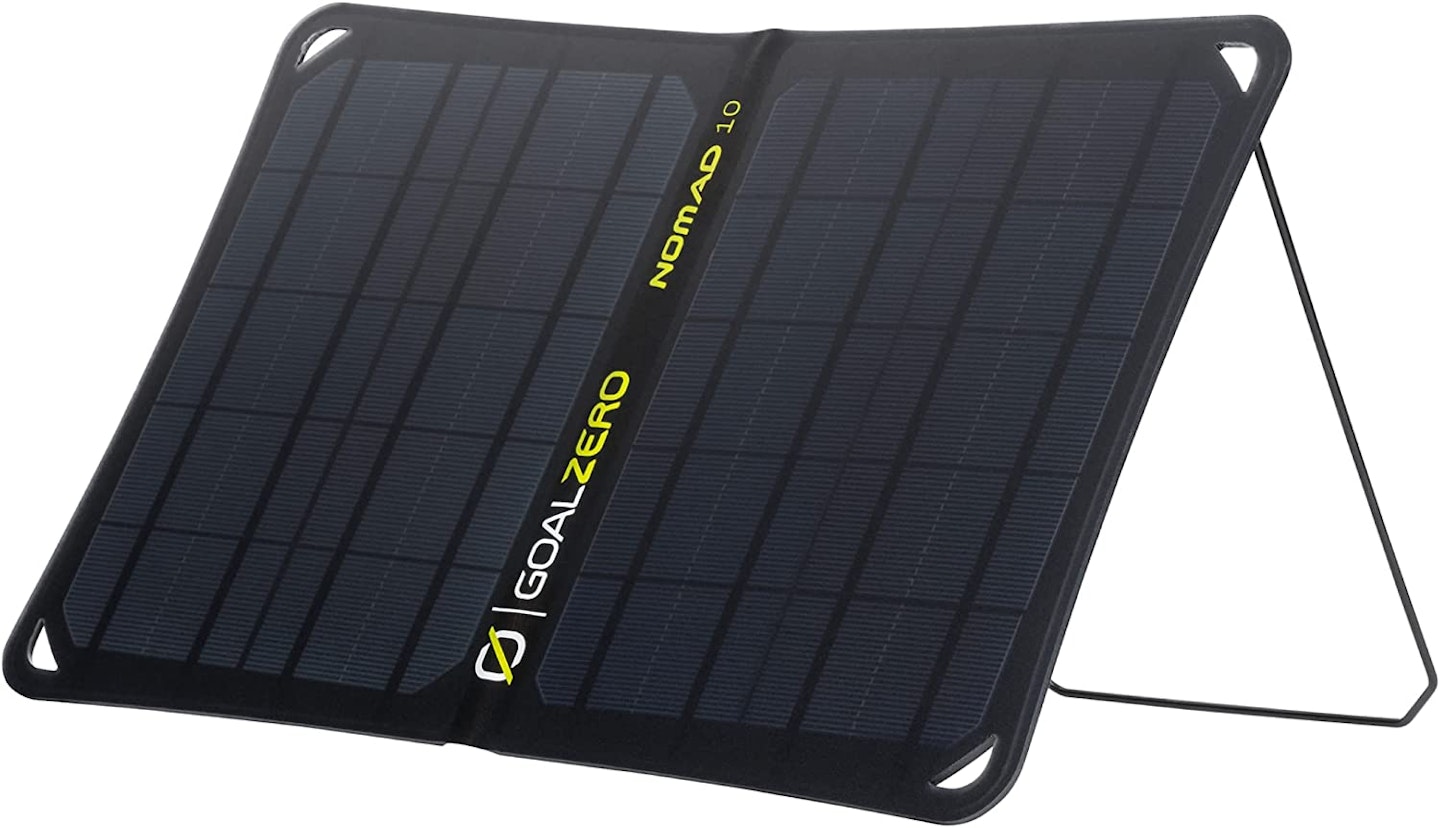
Off on a wilderness adventure? Then the Goal Zero Nomad 10 is a nice little companion to carry along with you. Its panels are 10W, meaning it’s good for keeping smaller devices topped up – though we wouldn’t recommend it as a group’s sole source of electricity when out on the trials. It’s a small two-panel system that can be hung from a backpack or guideline or propped up on its built-in stand.
Power: 10W
Weight: 508g
Connections: USB 10W
The best small solar panel with battery
For keeping things ultralight, the BioLite SolarPanel 5+ is a nifty device. It has just one 5W panel. While not the most impressive number, this power can directly trickle-charge a gadget – be it a smartphone, headtorch or GPS – or stored in the 2200mAh integrated power bank (that’s about the same as an iPhone 12 mini). The presence of a power bank means that you can make the most of the sunshine, saving its electric juice until it’s needed – at an evening camp, for example.
Power: 5W
Weight: 600g
Power bank: 2200mAh
Connections: USB 5W
The best solar panel for hiking
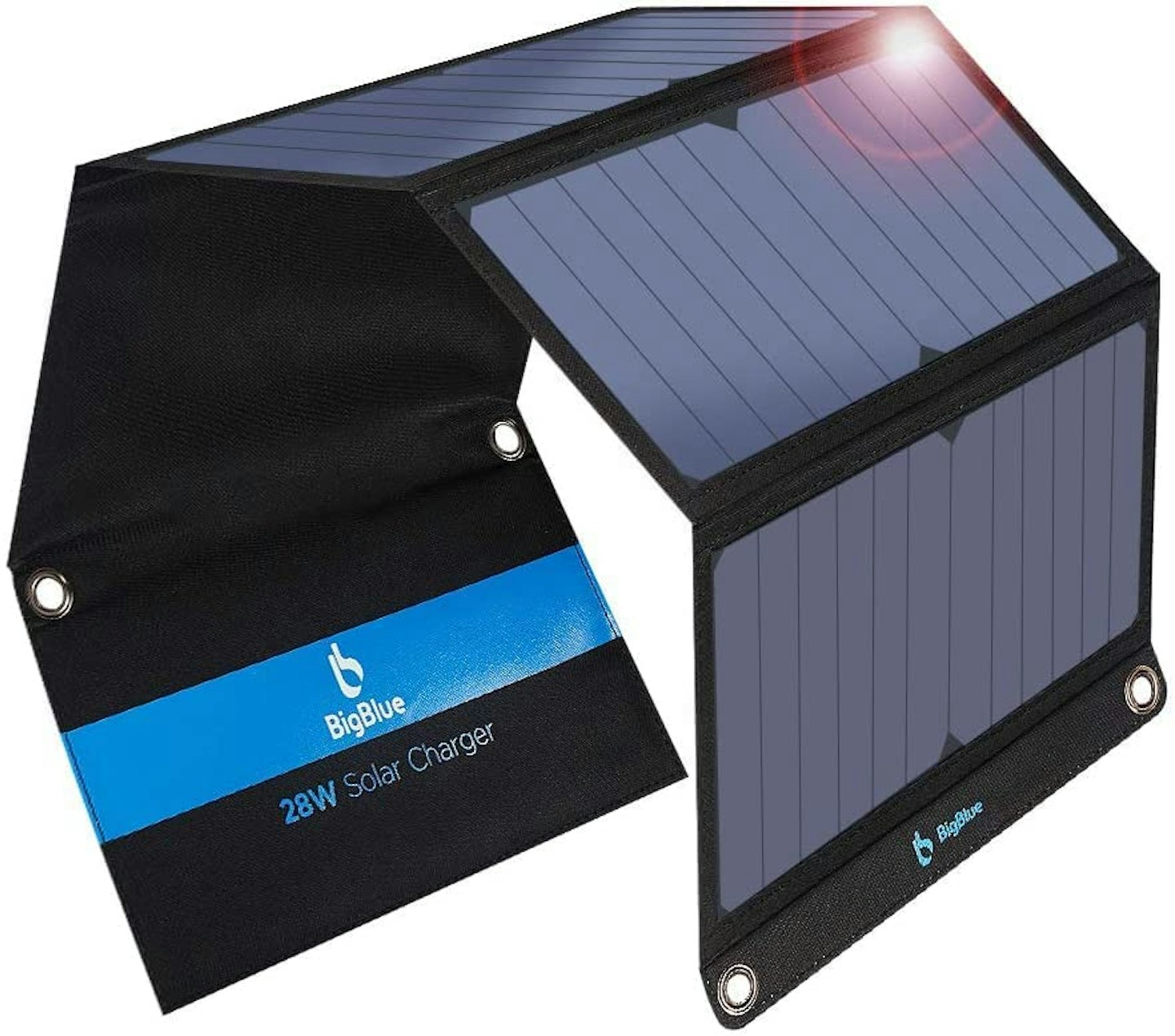
It’s with BigBlue that things start to get powerful. With efficient four panels (28 watts total) to play with, these will keep smaller gadgets positively overflowing in sunny weather. For ease of use, two USB outputs deliver a good flow that’ll work with cables for all types of handheld gadgets. Waterproofing is here against light rain, but you will want to store it when things get heavy, especially as the connections are not waterproof.
Power: 28W
Weight: 671g
Connections: x2 USB 5V/4A Max
The most versatile solar charger
Everything that makes the BigBlue 28W great is here, but there’s just more of it. With nine panels totalling 63W, this will need to wait for the campsite, car boot shelf or garden to be set up. But that’s okay because when it's up it’ll deliver. There are two USB outputs – one standard and one USB-C – and one DC output with ten additional connection heads for excellent power-based utility and versatility. Own an electric car? This comes bundled with an SAE-to-Clamp connection to have on hand, just in case.
Power: 63W
Weight: 1.3kg
Connections: USB 5V/2.4A; 9V/2A; 12V/1.5A, USB-C 5V/2.4A; 9V/3A; 12V/2.2A, DC 19V/3A
The best portable solar panel
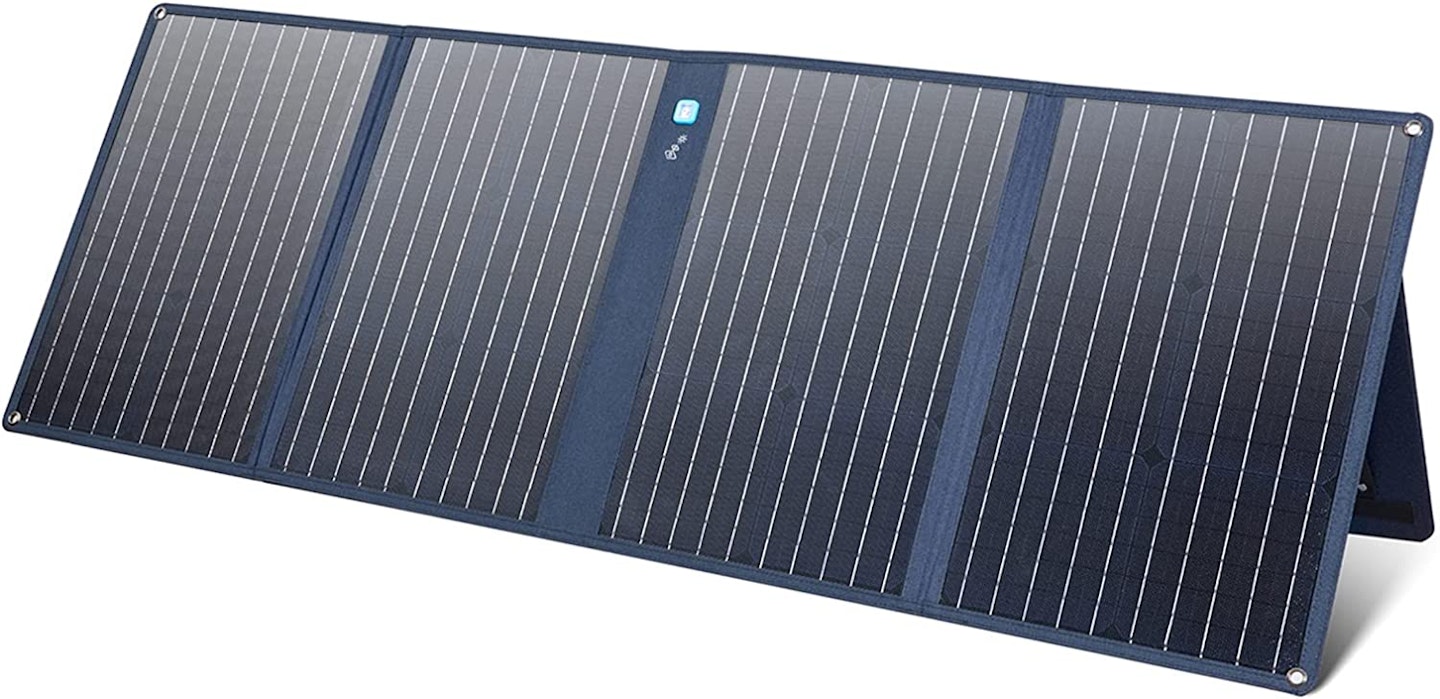
Efficient and powerful, the Anker 625 100W Solar Panel is our favourite option for anyone looking to take advantage of that amazing burning star in our skies. It’s got a direct output to charge two devices via USB and an adaptor for XT-60 to DC7909.
The real treat comes when pairing the 625 with one of the brand’s power stations, such as the Anker 521 PowerHouse reviewed previously. When used with such a device, the Anker 521 can be used to power electrical items, like camping coolers, fans, laptops and more.
With great power comes limited portability. This is a big solar panel, folding up into a neat (but still pretty large) package with a handle. For this reason, it’s best suited to gardens, basecamps, and campervans (and leisure batteries).
Power: 100W
Weight: 5kg
Connections: USB-A 12W, USB-C 15W, XT-60 100W
A compelling alternative: Our tests of Anker have been very recent, so it’s a brand that has our attention. However, we have previously tested the equivalent product from Jackery, along with its compatible station. To read more about that, head over and read Editor Adam Binnie’s hands-on test.
How do solar panels work?
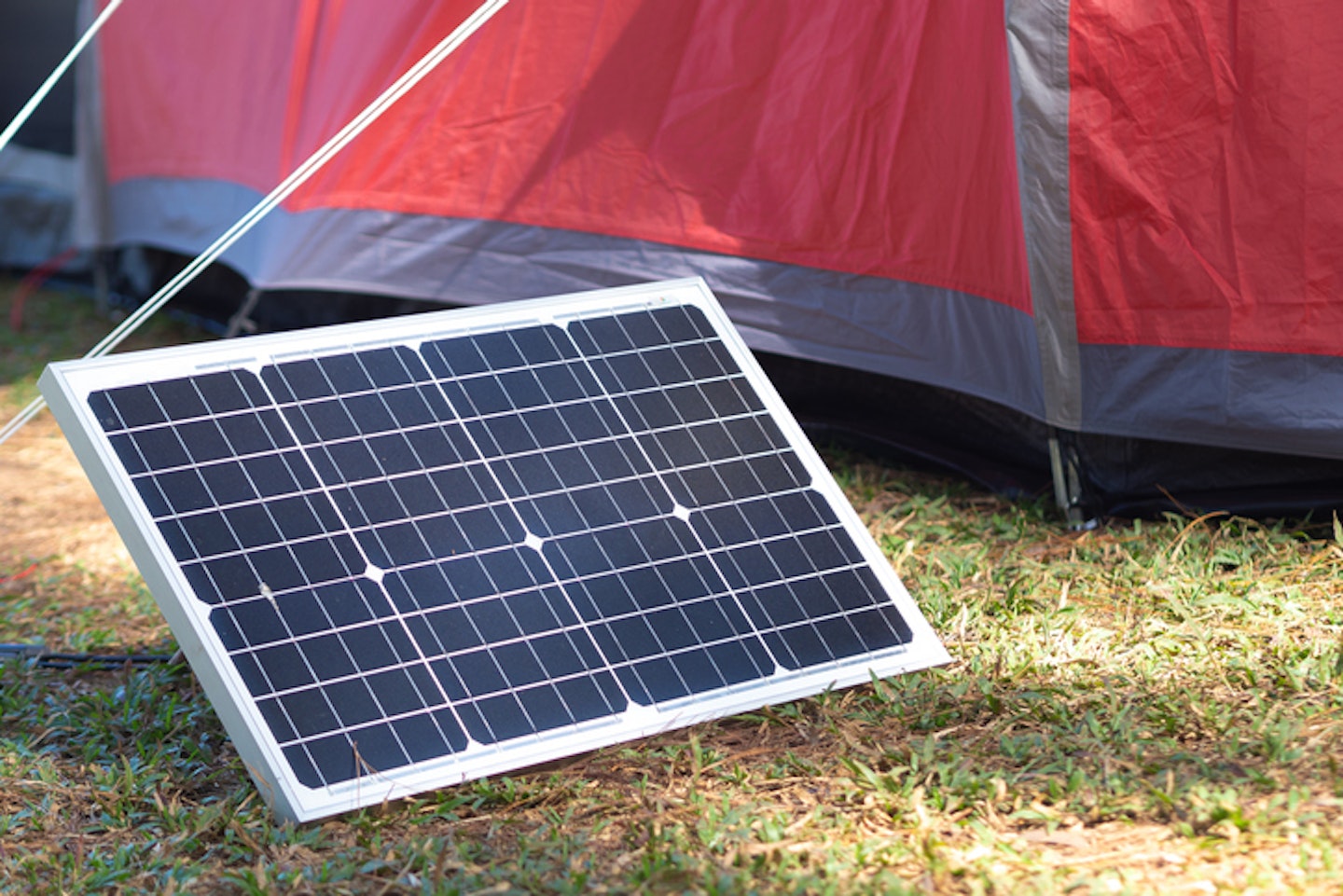
A solar panel carries photovoltaic cells and semi-conductive materials. These work together to absorb sunlight into the cells and generate electricity.
The form of electricity created is direct current, also known as DC. This DC power goes through a conversion process in an investor, becoming alternating current, also known as AC.
This process is the same whether you’re carrying a solar panel in your backpack or attaching one to your household roof.
How come I’m not getting the full wattage from a solar panel?

Solar panel wattage represents the maximum theoretical power that a unit can produce. This measurement is from ideal circumstances in sunlight exposure and temperature.
Given that the natural world isn’t one for being all that reliable, it can be hard to get the surroundings just right for a solar panel. The result is, often, that your solar panel will not be producing maximum wattage.
Adjusting a panel so it’s at a direct angle to the sun as it moves through the sky is a good place to start, and many solar panels have an indicator to let you know when you’re in the right spot.
Knowing this can help you deploy your solar panel more strategically and efficiently in other ways. If you’re going to be walking through forests all day, there’s not much use attaching the panel to your backpack.
Similarly, if the skies are clear and the sun is out but the weather forecast gives the following few days being overcast, it’s probably worth using a solar panel to top up a few devices, power banks or power stations.
If your solar panel is producing little or no power even in good conditions, a panel might be damaged or faulty. Reach out to the manufacturer to see what can be done.
Why are solar panels expensive?
There are a few factors that mean solar panels can appear expensive. The technology involved is very specialised and therefore incurs manufacturing, material, and assembly costs. Additionally, the consumer market for solar power is relatively new, and emerging tech always comes at a cost.
The good news is that as solar panel technology becomes more prevalent, the price is coming down. This is as true for home solar panels as it is for portable camping ones.
Why do solar panels need to be so large?
A solar panel can only do its job if it has sunlight to convert. The more surface area there is, the more sunlight it can gather and process, thus creating higher wattage.
Adding to the need for large units is that most commercially available solar panels have an efficiency of around 20 per cent. As the technology develops, this efficiency will increase, and the surface area can be reduced. Until this happens, if you want loads of solar power, you’ll have to make do with large solar panels.
